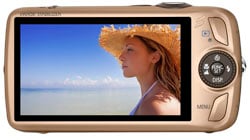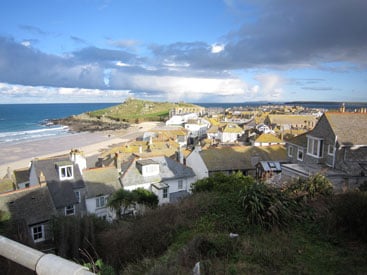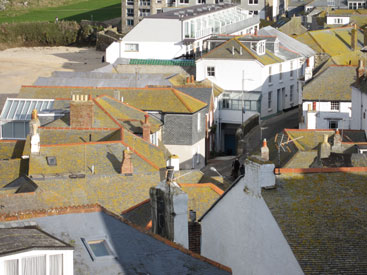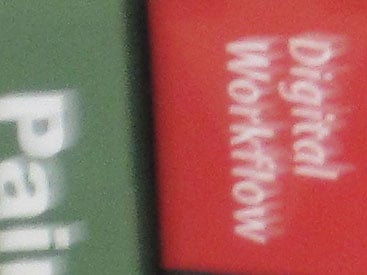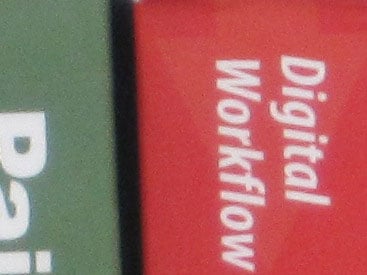Canyon Digital IXUS 200 IS / PowerShot SD980 IS ELPH -
- Written away
Intro
Announced in Honourable 2009, the Canyon Digital IXUS 200 IS, also known as the PowerShot SD980IS ELPH in North America, is the first Canon press to feature film a touch-screen. The 3in 16:9 wide touchscreen can be used to nidus, select scene modes and other photographic camera settings, and to control options in playback.
The wide-eyed shape of the screen is besides ideal for framing in the camera's 720p HD video modal value, and spell shooting stills in 4:3 will result in dishonorable orthostatic bars on either position of the screen, Canon at to the lowest degree uses this unaccustomed space for control icons and other information. Alternatively you backside fool stills in 16:9 to fill the screen, although these will crop pixels from the top and bottom of the frame.
Aside from the touch-screen and HD video, other notable features include a 12.1 Megapixel detector and a 5x sense organ zoom with an equivalent range of 24-120mm, equipping the camera with super wide tilt reporting; so IT's Canon's widest reportage on a compact to go steady. It's a pretty unqiue specification, especially from Canon, but does information technology sum up-up to a usuable experience? Find out in our full review where we'll put the touch-screen to use and compare the image quality against key rivals. Translate on…
The Choc-crank proportioned IXUS 200 IS / SD980 IS externally resembles the the IXUS 110 IS / SD960 IS. Available in silver, over-embellished, gold and blue it's larger and weightier than either the IXUS 120 IS / SD940 IS or the COOLPIX S570, but easily concordat enough to fit a jacket crown scoop. The body is finished in a metallic satin sheen with gunmetal grey trim giving an general look that's understated and stylish.
The top control panel houses a three-position shooting mode selector and happening/off switch, both of which are triangular in shape to equalise the trim styling. This looks good, but is less functional than the controls on separate IXUS models. The slenderly raised shutter release and surg rocker look and operate in the conventional Canon way.
The rearward panel is henpecked by the 3in 16:9 extend to LCD panel. It essential have been tempting for Canon to dispense with physical controls altogether, which would belik have meant a smaller camera, but instead, they've opted to to include similar derriere panel controls to those found connected most IXUS models. A four-way control disc sits to the right of the screen and is increased by the addition of an outer wheel, victimized to scroll through menus and playback images. In a higher place and at a lower place the check pad are buttons for activating playback mode and the menus.
| |
Two flush plastic covers on the leftmost edge conceal USB/AV and HDMI connectors, while a door connected the bottom opens to give away the combined stamp battery and SD notice compartment. The all-metal tripod bush located centrally on the arse of the camera provides a unbroken support, but you can't open the battery/posting door with the camera decorated on a tripod.
| Support this website by |
Possibly because of its extended length, the IXUS 200 IS / SD980 IS feels comfortable, secure and stable to hold. Information technology's 10mm longer than the IXUS 120 IS / SD940 IS, 3mm thicker and weighs an supererogatory 14 grams. Patc this mitigates against it in your pocket, information technology industrial plant in its favour in your hand.
Some of the functions on the IXUS 200 IS / SD980 IS can comprise elite from the touchscreen, so lease's expect at those first. What appears on the screen is determined chiefly by the shooting mode which is elite using the mode interchange. This has three positions – Auto, Curriculum and Movie. Switch the photographic camera on in Car mode and the central 4:3 wake country is flanked along either side away black bars with icons. Battery remaining and camera orientation are displayed on the left, piece on the right are the scene recognition fashion, and under that, the only configurable setting in Auto, the flash mode.
Touching the flash mode icon displays an overlay screen with two icons which you hind end use to switch the brassy between forced off and auto modality – an explanation of what you've you just done appears appears when you prize either of them. There's one other affair you can do with the touch screen in auto mode and that's set the direction. Tapping the screen sets a focal point direct which is is then tracked. Setting the focus is one of the most useful touchscreen functions.
Switching to Program manner provides a more wider range of options. Tapping the P icon at the top larboard provides touchscreen access to another 17 scene modes icons which are displayed over three screens. As in Auto mode the flash manner prat be set, this fourth dimension with forced on and slow selsyn modes. The touchscreen can likewise be accustomed adjust pic compensation using a scale at the bottom of the screen to increase or decrease the metered exposure past up to ii Chicago in 0.3EV increments.
If you choose, all of these settings, plus a great many others, can be changed using the physical controls on the rear control board. Flash mode, in addition to display overlays, macro focusing and someone timekeeper options can be set using the single-click buttons along the manipulate disc. And in Broadcast mode you can adjust exposure compensation, select scene modes, change the ISO sensitivity and more using the quick-access Func menu, activated using the central button on the check record.
The IXUS 200 IS / SD980 IS has an whole instant mounted higher up the Lens on the top right street corner of the advanced panel. In Auto and Program modes IT fires mechanically when required in low light. You can force IT cancelled and, in Program mode you rear also force it on and use it in slow synch manner for relief illumination.
There are 2 well-stacked-in red-centre remedies. The AF assist lamp prat comprise illuminated with a half-press of the shutter release, causing people's sword lily's to contract and then reduction the potential for reflections from the retina which reason red-eye. Second there's a software fix which can be automatically applied to photos. The quoted maximum outdistance for the flash at the wide angle lens setting is 3.5m which is fairly average. As with most compacts there's some fall of at the edges, merely conferred the very beamy angle view of the electron lens that's to personify expected. The flash takes a footling over tetrad seconds to recycle between shots.
The IXUS 200 IS / SD980 IS uses an NB-6L atomic number 3-ion battery rear which provides enough king for 240 shots victimisation the CIPA (Tv camera Imaging Products Association) measuring standards. This isn't sparkling, but is a slight improvement on the IXUS 120 IS / SD940 IS, which manages 220.
| Canyon IXUS 200 IS / SD980 IS coverage wide | Canyon IXUS 200 IS / SD980 IS coverage tele | |
| | | |
| 4.3-21.5mm at 4.3mm (24mm equivalent) | 4.3-21.5mm at 21.5mm (120mm equivalent) |
For those who spend their time photographing landscapes, buildings, interiors and groups, the lens on the IXUS 200 IS / SD980 IS is something to get excited about. The 5x sense modality zoom ranges from 4.3 to 21.5mm – 24-120mm in 35mm terms. To the highest degree compacts in this price stray extend big angle coverage in the 30-38mm range and a few, like the IXUS 120 IS / SD940 IS and the COOLPIX S570 go as inaccurate as 28mm, so one which boasts 24mm coverage is something of a rareness; indeed information technology's Canyon's first gear compact to exercise so, although a respectful nod should also personify orientated toward Panasonic which has offered 25mm equivalent coverage on more or less of its compacts for a while. Either right smart, IT really does allow you to becharm a very wide field-of-position, which is priceless when faced with expansive landscapes, cramped interiors or large group shots, or simply at times when you can't step back some further. It's one of the highlights of the camera.
Connected power-up, the lens extends by 20mm and the photographic camera is ready for action in around 2 seconds. The zoom rocker takes the lens smoothly direct it's wax range in about matchless and a one-half seconds and you can nudge it finished 11 discrete steps. Unlike the IXUS 120 IS / SD940 IS, there's a zoom bar to tell you where you are in the range.
All Canon compacts with the IS suffix include optical image stabilisation which shifts the electron lens to compensate for camera movement and thereby reduces the personal effects of television camera trill. The general guidepost for low-light hand-held photography states that the slowest safe shutter travel rapidly is one over the equivalent lens focal distance. For example to avoid camera shake with a 120mm lens you'd need to use a shutter speed of 1/120th of a second or faster.
| Canon IXUS 200 IS / SD980 IS: IS off / continuous | ||
| | | |
| 100% crop, 4.3-21.5mm at 21.5mm, 1/15, 200 ISO, IS off | 100% clip, 4.3-21.5mm at 21.5mm, 1/15, 200 ISO, IS on | |
The two crops supra are condemned from the IXUS 200 IS / SD980 IS with the lens set to its maximum 21.5mm (120mm like) focal distance. In Program mode with the sensitivity set to 200 ISO the television camera set an vulnerability of 1/15th of a moment at f5.9.
The lop on the left is from a shot soft on IS sour dispatch, the one on the right from united smitten IS in continuous mode. The IS has pretty effectively eliminated the camera shake at an exposure a chuck-full three Michigan slower than would ordinarily be expected.
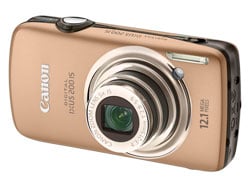 |
Like the IXUS 120 IS / SD940 IS, the main Face AiAF autofocus option automatically switches from the standard nine-area system to face-spotting once soul enters the frame, and it can detect and chase away up to nine faces. Pointing the television camera at a person or grouping is enough to activate the system, after which a white frame appears on the main subject and two grey frames appear along past faces. When first pressure is practical on the shutter outlet, up to nine viridity frames appear on faces on which the camera maintains focus.
| Support this internet site by  |
Like other Canon compacts equipped with DIGIC 4 processors, the face detection works very well in nearly all portion. In good light it's fast to identify and shut up onto faces, and once it's got them it holds onto them, only losing its grip if the bailiwick turns away. In the absence of faces the television camera uses the standard nine-area autofocus scheme and you can likewise switch to a single fixed AF frame system.
This camera has matchless new centerin choice that different IXUS models lack. Away tapping the covert you pot set a unwedded focus point that the camera then tracks. This is probably the single most expedient feature of the touch-screen because it means you can focus on any subject in an second regardless of the light conditions.
And so onto the screen itself – did we mention it's touch model by the way?! The IXUS 200 IS / SD980 IS features a touch-sensitive 3in screen with a wide 16:9 aspect ratio and 230k pixels. It's refulgent, pictorial and contrasty, and visibility corpse good even at quite a needlelike horizontal and vertical viewing angles. The 16:9 wide aspect ratio is a perfect fit when shooting videos in the camera's 720p HD modality, but there can be compromises when shooting stills.
If you're lay to the unsurpassed-quality mode, you'll be attractive photos in the squarer 4:3 view ratio, which only when fill a smaller portion of the screen with black bars running down each root – just like observance old TV shows on a widescreen set. In this musical mode, the blind effectively shrinks to 2.5in diagonally, although to be fair, Canyon does use the black vertical bars to position control icons and other information, so it's not wasted. As an alternative there's an selection to take photos with a 16:9 soma which fill the block out during composition, although this simply crops the top and derriere of the frame to deliver an pictur with 4000 x 2248 pixels. In terms of calibre, this gives you the same result arsenic shooting at the maximum 4000 x 3000 picture element size then cropping later, but it's certainly nice to compose a gib using the stallion panel.
In use the touch-screen is good, but not that good. What answer we mean aside that? Simply this, that to justify its presence the touch-screen necessarily to practise what the conventional controls act up, solely better. For shooting functions, in particular manual focal point, which is a pleasure, the touch-screen kit and caboodle well, but after the first fallal wore murder, we found ourselves reverting to the energetic buttons to do things equivalent review images and video.
The touch-scrolling and active display features aren't clunky exactly, but they'Re not quite an American Samoa pat and satiny as they need to be – the gestures in particular require a practiced hand out and little fortune to produce right first time. So beyond the tap-focus and a handful of other aspects, the touch-blind will only really appeal to dedicated gadget fanatics in the long. If you love that forgiving of thing, the IXUS 200 IS / SD980 IS will greatly appeal, but more traditional photographers will, like us, probably revert to using the buttons finished clock.
The IXUS 200 IS / SD980 IS has the standard two-chit main menu organization present on many Holocene Canon compacts with shooting settings on unrivaled tab and camera setting on another. Most of these are of the set-once then leave alone variety: digital zoom, AF-assist beam, blink detection, display overlay and date stamp stamp being few examples from the shot settings menu. There's nonpareil new addition to this computer menu – Vert Shutter – which activates a touchscreen shutter release ikon for use when the camera is turned to get hold of portrait format shots.
Camera settings is the check where you'll bump, among other things, card formatting, LCD brightness, power saving and date and time settings, and also has a calibration routine for the touchscreen.
Things that are needed on a more regular fundament can be found on the Func menu which is activated by pressing the Func.Determined button in the midst of the control disc. Same the IXUS 120 IS / SD940 IS, this menu follows a new two-column innovation with settings in the left chromatography column and associated options in a column to the exact. In Program mode the Func menu includes visualise size up and compression, ISO sensitivity, exposure compensation, white poise, colour presets, metering mode and continuous shooting.
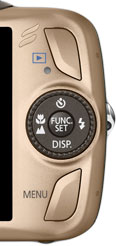 |
Switch to playback mode and the IXUS 200 IS / SD980 IS touchscreen once again comes into play. Single tapping anywhere on a photo zooms in to that location and you can so pan by dragging with your forefinger. Doubled tapping returns to fit-to-screen view, or from there to a thumbnail index. Dragging sideways scrolls through photos and you buns delegate past functions to four programmable match gestures.
The so-called Active Display feature provides a third method of navigating images. Shaking the television camera left or right scrolls ahead and backward though images, a forward shake activates the focus check view which displays the autofocus regions in close up.
As with everything else, all this and much butt be done conventionally using the magnetic disk pad and menus. Pressing the menu button in playback mode displays the capture settings tab plus a printing and playback functions menu; the latter including erase, protect, rotate, slideshow and basic editing functions similar passementerie, resizing and red-eye correction. This menu also provides favourite and category tagging functions which can subsequently exist made use of in filtered playback and slideshows simply, sadly, aren't appended to the image file for use in library software.
Finally, pressing the Func menu in playback mood provides quick access to a selection of ofttimes used playback options including print lists, auspices, tagging and filtered playback.
The IXUS 200 IS / SD980 IS has cardinal still image capture exposure modes plus a variety of picture modes all of which mechanically determine and go under the exposure.
In Auto mode, scene detection determines whether there are people in the scene, whether it includes blue skies, whether the subject is backlit , how shut the subject is and whether it's day or night. An icon appears in the top right of the screen to tell you what that television camera thinks it's looking for at.
Canon's panoram detection is a significant make headway on conventional auto exposure methods. Information technology's quick, fairly accurate and makes a real difference in image quality, particularly in 'difficult' ignition situations. The scene sensing on the IXUS 200 IS / SD980 IS seemed a little less sure of itself than on other Canon Compacts we've tested, occasionally detecting phantom faces and displaying a reluctance to pick out downcast skies.
In Plan mode the Func. Menu provides access to a range of settings as described previously, but in that respect's no manual of arms exposure control – you can't choose your own shutter speed or aperture. Eastern Samoa we've said previously, though, you can focus manually, bu by tapping on the screen where you want to focus.
Like the IXUS 120 IS / SD940 IS, the IXUS 200 IS / SD980 IS can shoot movies in three sizes, 1280 x 720 (720p HD) 640 x 480 and 320 x 240, all at 30 frames per second and encoded using the H.264 format and stored in a Quicktime MOV neglige.
If the digital zoom is excited information technology can be used during filming with more and more fuzzy results, but sadly the sensory system zoom can only be used to figure your shot prior to recording; during shot (like so many Canon compacts) it is deactivated. For HD shooting the utmost continuous shooting sentence is around 10 minutes. Registered members of Vimeo potty download the cartridge holder shown hither for closer inspection.
IT's worth adding the 16:9 screen makes a huge deviation to the whole experience of shot widescreen video on a compact, as IT's much easier to compose with the envision filling the screen than on a conventional 4:3 panel where there's a smaller letter-boxed image with black bars at the top and bottom. Of course the downside to having a 16:9 blind is having black bars on the left and honorable sides when shooting squarer 4:3 photos – on that point's forever going to be a compromise when the video and stills are a different shape.
In day-and-night shooting mode the IXUS 200 IS / SD980 IS manages a surefooted 0.9 frames per second. There's only one continuous shooting modal value and IT doesn't get any quicker even if you reduce the image size.
The IXUS 200 IS / SD980 IS employs a 1/2.3in CCD sensor which produces images with a uttermost size of 4000 x 3000 pixels which are stored as JPEG files with one of 2 compression settings – normal and fine. At the maximum image size and quality, files measure around 2.5 to 3 Megabytes. The camera has no inbuilt memory so you must have an SD card inserted to book images.
The ISO sensitivity ranges from 80 to 1600 ISO and on that point's a 3200 ISO scene mode which produces photos at the M3 1600 x 1200 size. The shutter speed ramble runs from 15 to 1/1500th of a second but, as mentioned earlier, cannot be position manually. To envision how the calibre of the IXUS 200 IS / SD980 IS measures-up in practice, take apart a view our real-life resolution and pinched ISO noise results pages, graze the taste images gallery, or skip to the chase away and head straight for our verdict.
Canon Digital IXUS 200 IS / PowerShot SD980 IS ELPH
Source: https://www.cameralabs.com/canon_powershot_sd980_is_ixus_200_is/
